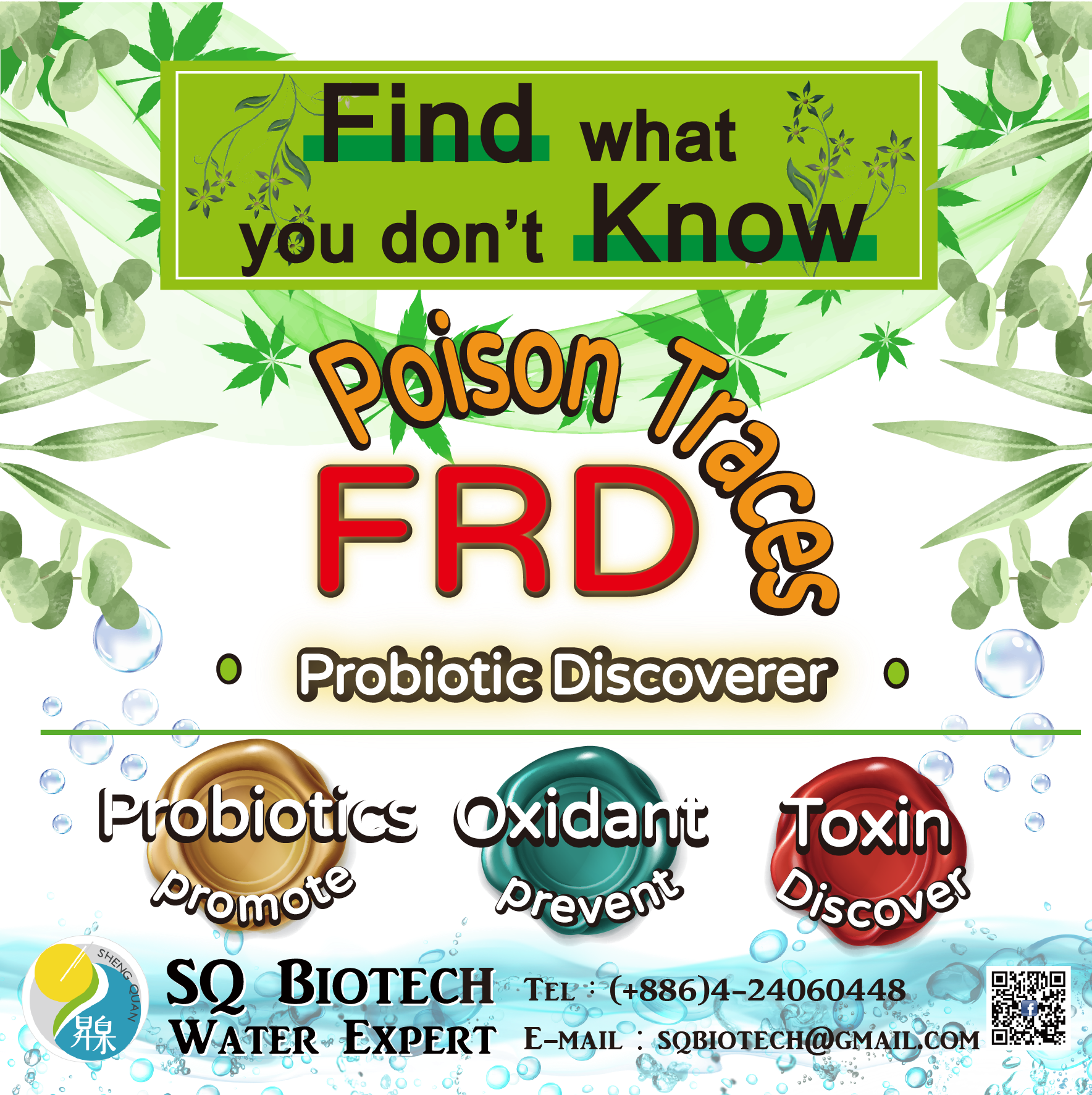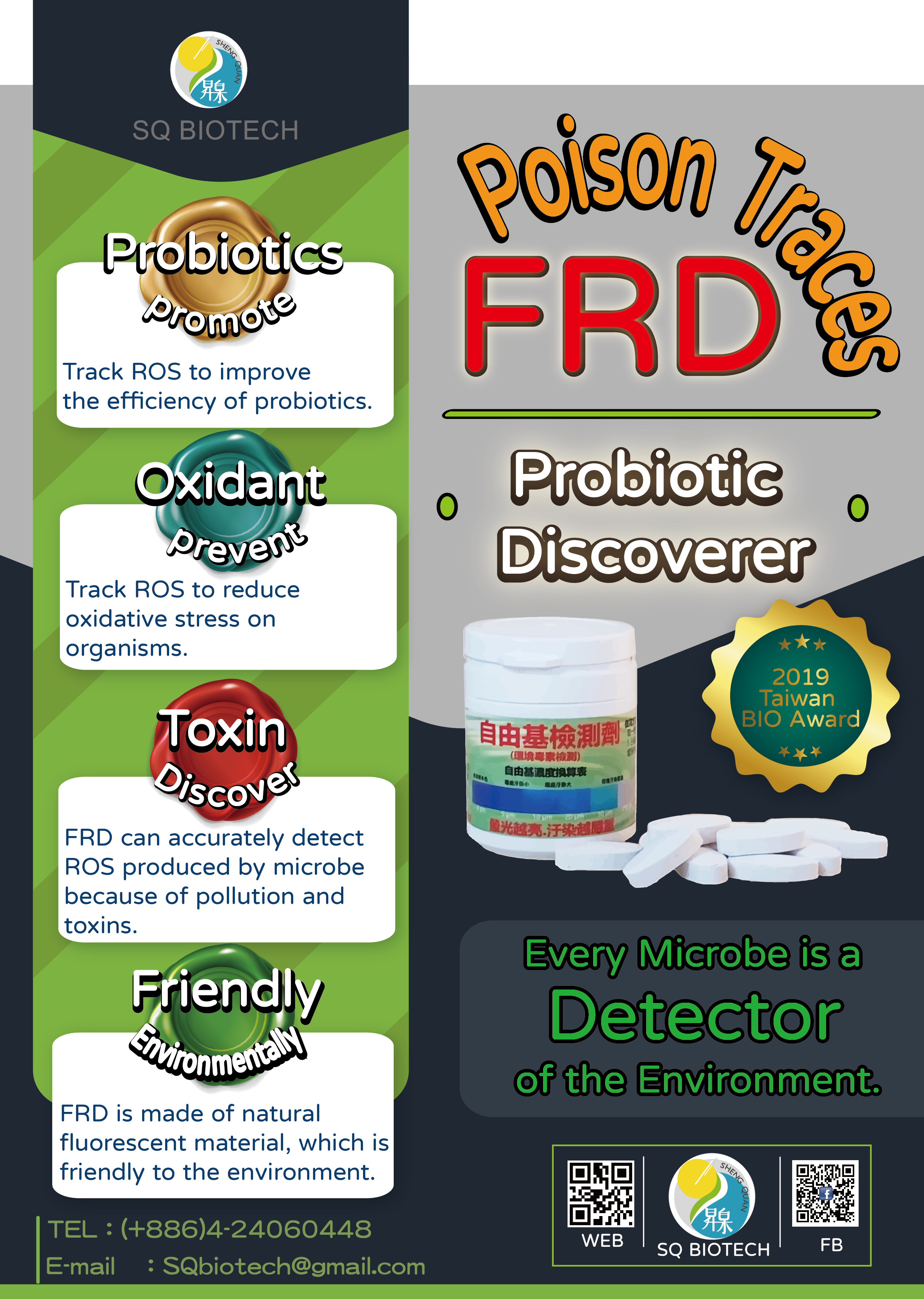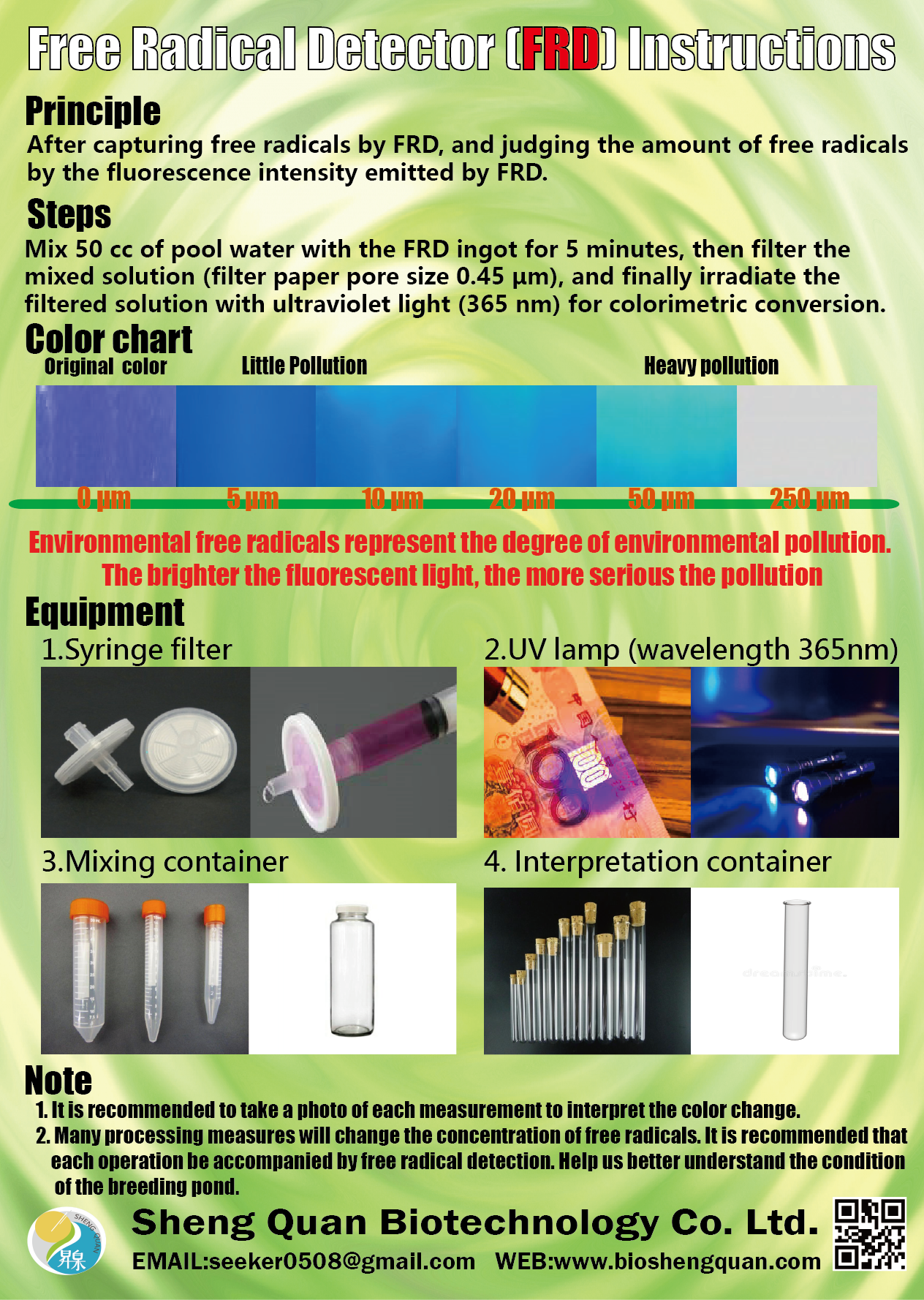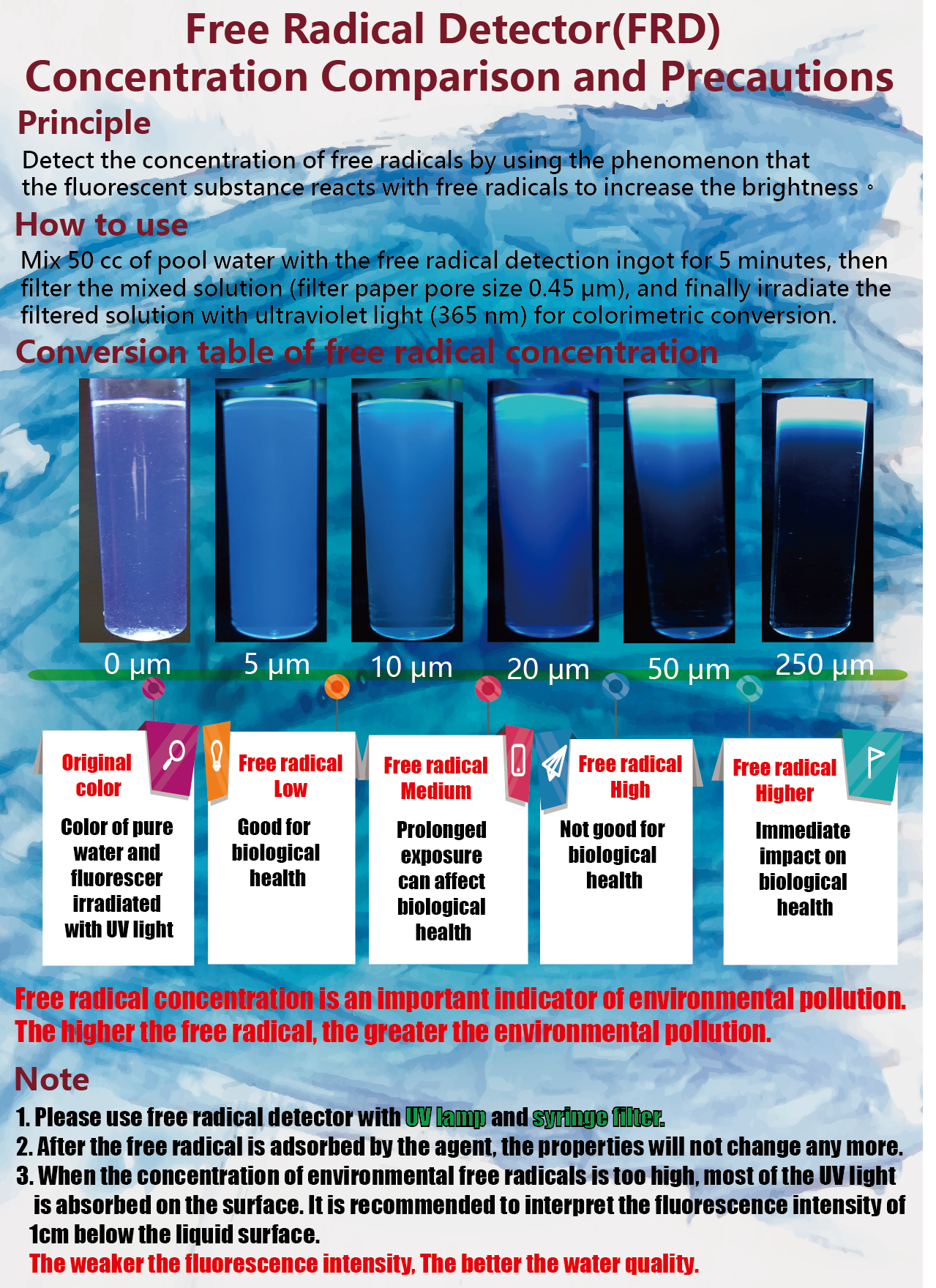






Poison Traces ( F R D )
The scope of application:
Product description
.png)
.png)
What are free radicals?
Free radicals are mainly produced by pollution in the environment and cause abnormal conditions produced by normal substances. For example, oxygen (O2) in the environment is converted to superoxide radicals (O2-) due to pollution. The free radicals in the environment are constantly generated, and at the same time they are continuously neutralized and disappeared. The net value of the generation and disappearance is "environmental free radicals".
Free radicals may be continuously generated due to various pollution (air pollution, water pollution), microorganisms (bacteria, fungi), radiation (ultraviolet rays) and the high temperature of the internal combustion engine of automobiles.
Free radicals will cause harm?
Numerous scientific journals have reported that free radicals can harm the organism's immune and genetic systems. Therefore, the damage caused by free radicals has four characteristics:
First, the indefinite etiology (indefinitely): Owing to the damage to immune system, the causes to the death of aquaculture are hard to be identified.
Second, hereditary (hereditary): DNA damage & gene mutation, which leads to the fragile & feebler spawns.
Third, degenerative: Indirect injury results in the delay of the death which is observed after the rain.
Fourth, the irrrparable (irrrparable): Hereditary and immune cells are hard to repair once damaged. That is, recurring of diseases happens easily after injury.
2020 Marin Fish Farming Technology Forum Speech content
Free radical products used in aquaculture and environmental disinfection.
Most of the products used in general environmental disinfection, sterilization and deodorization, as well as in aquaculture to kill algae and decompose organic matter in the substrate are products that use free radicals.These products include bleach (water), chlorine dioxide, hypochlorite, hydrogen peroxide, ozone and peroxide, all of which can directly and indirectly produce free radicals.Products that use free radicals are extremely effective in decomposing and killing bacteria, but they can also be harmful to living organisms, so care should be taken when using them.
If there are organisms, "do not" use free radical products with high oxidizing power.
Poison Traces : FRD (Free Radicals Detector)
Principle
Detect the concentration of free radicals by using the phenomenon that the fluorescent substance reacts with free radicals to increase the brightness。

How to use??
Mix 50 cc of pool water with the free radical detection ingot for 5 minutes, then filter the mixed solution (filter paper pore size 0.45 μm), and finally irradiate the filtered solution with ultraviolet light (365 nm) for colorimetric conversion.

.png)


Poison Traces : FRD
enhances the efficiency of probiotics
Bacteria and other microorganisms will release free radicals to resist unfavorable factors (toxins, competitors) in the environment. Therefore, we can detect the concentration of free radicals in water to know whether there are factors in the environment that are unfavorable to the survival of organisms.
At the same time, it can also understand the growth of probiotic products in the aquaculture pond, and find the most suitable time to add probiotics to enhance the efficiency of probiotic use.
Under the action of FRD
Every "microorganism" in the environment is our "micro-detector".
Examples of FRD use in aquaculture ponds: Photosynthetic Bacteria
英文~網站用.png)
The best time for this brand of probiotics to work in this culture pool is : 12HR
Example of FRD use in a breeding pool: Brevibacterium
英文~網站用.png)
The best time for this brand of probiotics to work in this culture pool is : 8HR
Example of FRD use in a culture pond: bacillus subtilis
英文~網站用.png)
The best time for this brand of probiotics to work in this culture pool is : 2HR
FRD can track probiotics and enhance the effectiveness of probiotics.
